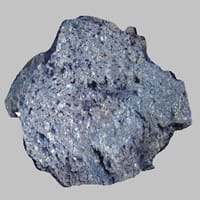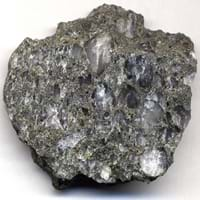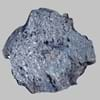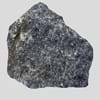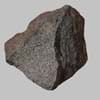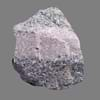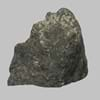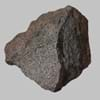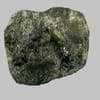Definition
Mugearite is a type of oligoclase bearing basalt, also comprising of olivine, apatite, and opaque oxides
Conglomerate is a sedimentary rock which forms from rounded gravel and boulder sized clasts which are cemented together in a matrix
Origin
Skye, Scotland
Italy
Discoverer
Alfred Harker
Unknown
Etymology
From mugear + -ite
From Latin conglomeratus, to roll together, i.e. from com together + glomerare to gather into a ball, from glomus (genitive glomeris) a ball
Class
Igneous Rocks
Sedimentary Rocks
Sub-Class
Durable Rock, Medium Hardness Rock
Durable Rock, Soft Rock
Group
Volcanic
Not Applicable
Other Categories
Opaque Rock
Coarse Grained Rock, Opaque Rock
Texture
Glassy, Massive, Porphyritic, Scoriaceous, Vesicular
Clastic
Color
Black, Brown, Light to Dark Grey
Beige, Black, Brown, Buff, Light to Dark Grey, Orange, Rust, White, Yellow
Durability
Durable
Durable
Scratch Resistant
Yes
Yes
Appearance
Dull and Soft
Shiny and Rounded
Interior Uses
Floor Tiles, Flooring, Homes, Hotels
Decorative Aggregates, Floor Tiles, Homes
Exterior Uses
As Building Stone, Garden Decoration
As Building Stone, As Facing Stone, Garden Decoration, Office Buildings, Roof Tiles
Other Architectural Uses
Curbing
Curbing
Construction Industry
As Dimension Stone, Cobblestones, Rail Track Ballast, Roadstone
As Dimension Stone, Cement Manufacture, Construction Aggregate, for Road Aggregate, Roadstone
Medical Industry
Not Yet Used
Not Yet Used
Antiquity Uses
Artifacts, Monuments, Sculpture
Artifacts, Monuments, Sculpture, Small Figurines
Commercial Uses
Creating Artwork
Cemetery Markers, In aquifers, Tombstones
Types
Alkaline Basalt, Boninite, High Alumina Basalt, Mid Ocean Ridge Basalt (MORB), Tholeiitic Basalt, Basaltic trachyandesite, Mugearite and Shoshonite
Not Available
Features
Has High structural resistance against erosion and climate, Very fine grained rock
Clasts are smooth to touch, Is one of the oldest rock, Matrix variable
Archaeological Significance
Famous Monuments
Data Not Available
Data Not Available
Famous Sculptures
Data Not Available
Data Not Available
Formation
Mugearite forms when lava reaches the Earth's surface near an active volcano. The temperature of lava is between 1100 to 1250° C when it gets to the surface.
Conglomerate forms where sediments consisting mainly of pebble and cobble-size clasts at least two millimeters in diameter starts accumulating.
Mineral Content
Olivine, Plagioclase, Pyroxene
Clay, Sand, Silica, Silt
Compound Content
Aluminium Oxide, CaO, Iron(III) Oxide, FeO, Potassium Oxide, MgO, MnO, Sodium Oxide, Phosphorus Pentoxide, Silicon Dioxide, Titanium Dioxide
NaCl, CaO
Types of Metamorphism
Burial Metamorphism, Impact Metamorphism
Burial Metamorphism, Cataclastic Metamorphism, Regional Metamorphism
Types of Weathering
Biological Weathering, Chemical Weathering
Not Applicable
Types of Erosion
Not Applicable
Chemical Erosion, Coastal Erosion
Grain Size
Not Applicable
Coarse Grained
Fracture
Conchoidal
Uneven
Streak
White to Grey
White
Porosity
Less Porous
Highly Porous
Luster
Not Available
Dull
Compressive Strength
Not Available
Cleavage
Not Applicable
Non-Existent
Toughness
2.3
Not Available
Specific Gravity
2.8-3
2.86-2.88
Transparency
Opaque
Opaque
Density
2.9-3.1 g/cm3
1.7-2.3 g/cm3
Resistance
Heat Resistant, Pressure Resistant, Wear Resistant
Heat Resistant
Deposits in Eastern Continents
Asia
India, Russia
China, India, Kazakhstan, Mongolia, Russia, Uzbekistan
Africa
South Africa
Namibia, Nigeria, South Africa
Europe
Iceland
Austria, Denmark, Germany, Great Britain, Netherlands, Norway, Poland, Sweden, Switzerland, United Kingdom
Others
Not Yet Found
Greenland
Deposits in Western Continents
North America
Canada, USA
Canada, USA
South America
Brazil
Brazil
Deposits in Oceania Continent
Australia
Not Yet Found
New South Wales, New Zealand
All about Mugearite and Conglomerate Properties
Know all about Mugearite and Conglomerate properties here. All properties of rocks are important as they define the type of rock and its application. Mugearite belongs to Igneous Rocks while Conglomerate belongs to Sedimentary Rocks.Texture of Mugearite is Glassy, Massive, Porphyritic, Scoriaceous, Vesicular whereas that of Conglomerate is Clastic. Mugearite appears Dull and Soft and Conglomerate appears Shiny and Rounded. The luster of Mugearite is not available while that of Conglomerate is dull. Mugearite is available in black, brown, light to dark grey colors whereas Conglomerate is available in beige, black, brown, buff, light to dark grey, orange, rust, white, yellow colors. The commercial uses of Mugearite are creating artwork and that of Conglomerate are cemetery markers, in aquifers, tombstones.
